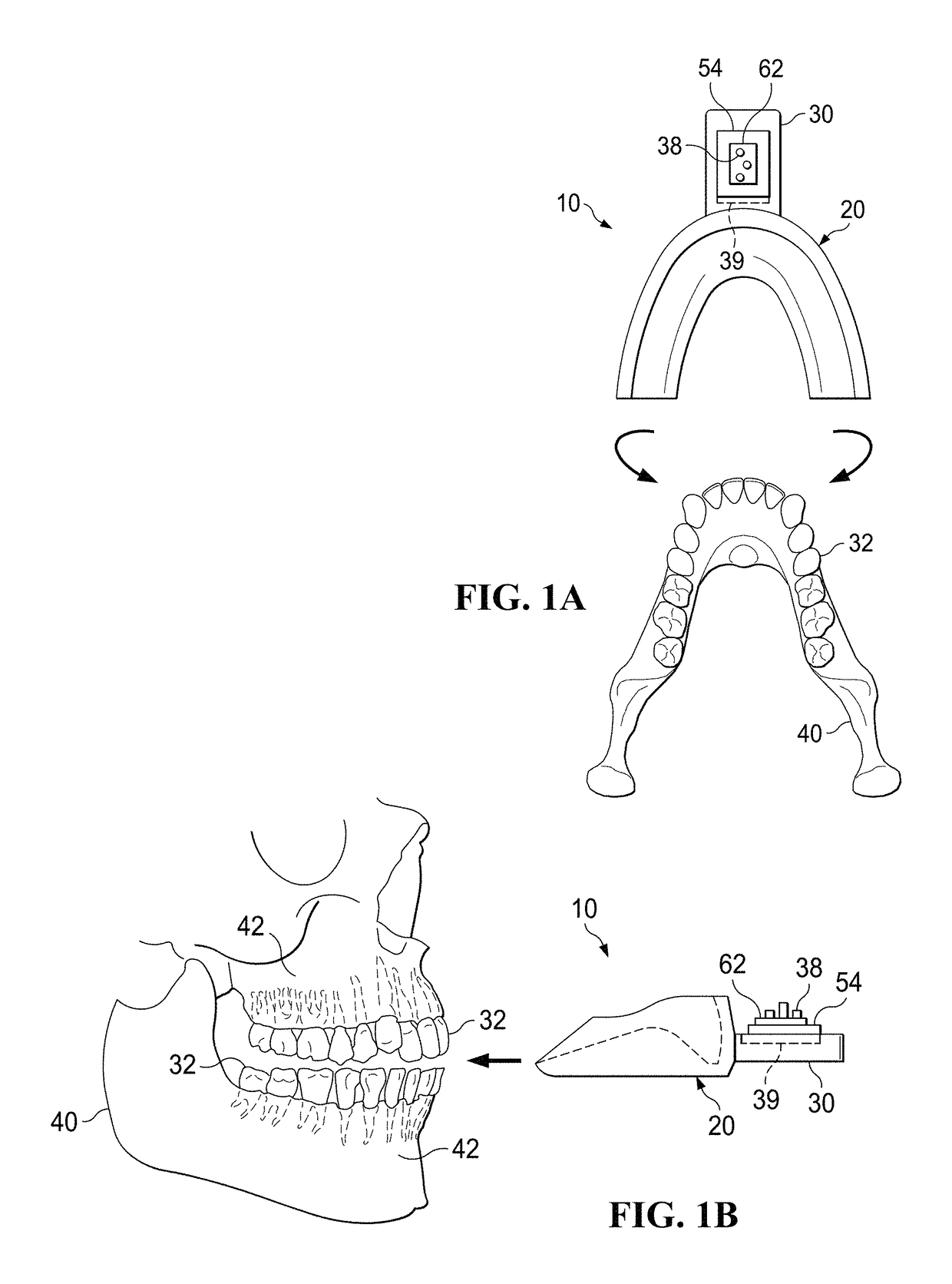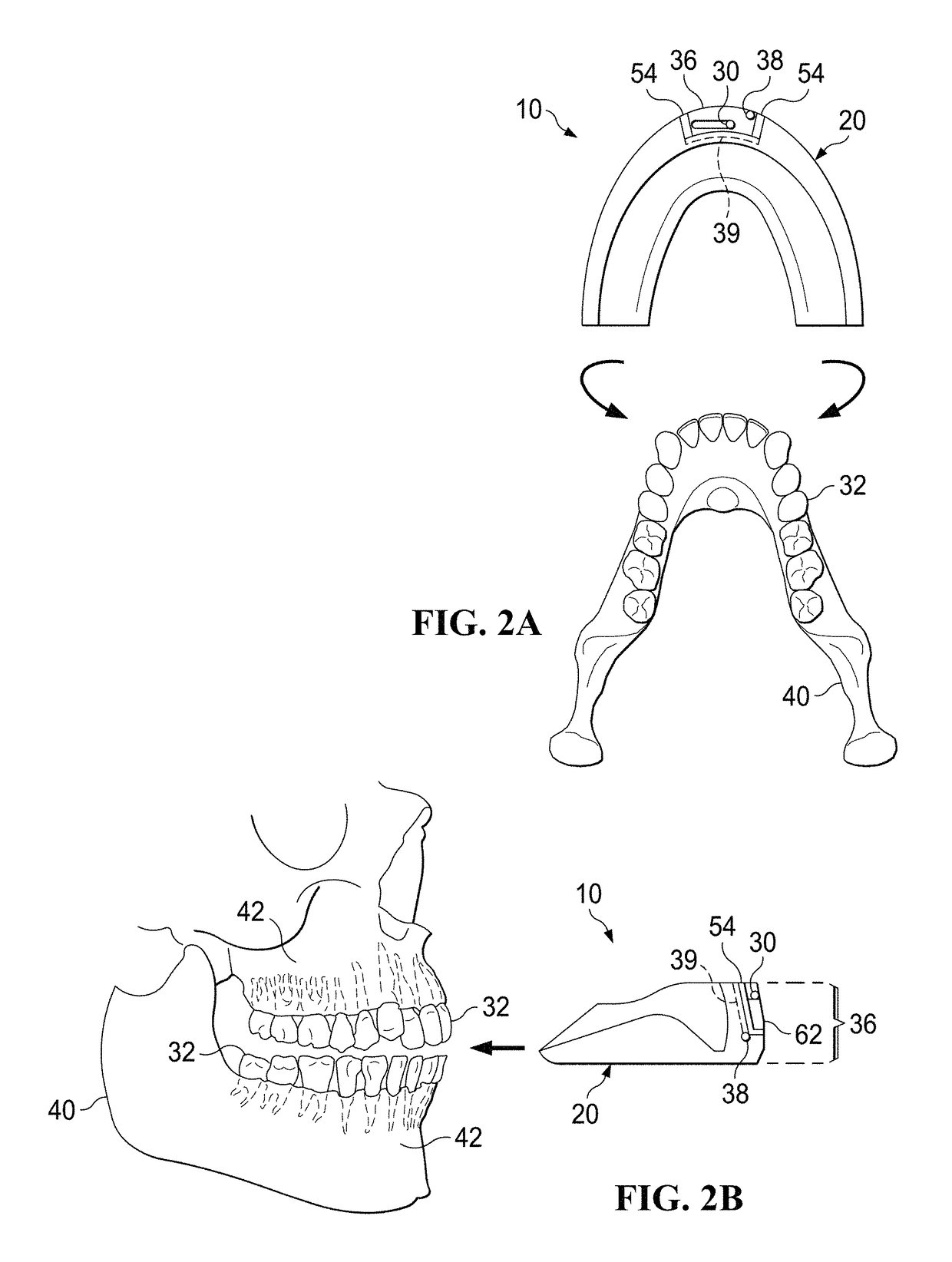Orthodontic accelerator
a technology of orthodontic accelerator and accelerator plate, which is applied in the field of orthodontic accelerator, can solve the problems of reducing usage and compliance, complicated orthodontic treatment, and long treatment time average of 24 months, and achieves the effects of improving bone formation, efficacy, and restoring mechanosensitivity to bone tissu
- Summary
- Abstract
- Description
- Claims
- Application Information
AI Technical Summary
Benefits of technology
Problems solved by technology
Method used
Image
Examples
Embodiment Construction
[0102]In accordance with one embodiment of the invention, non-static forces (e.g., vibration) are used to accelerate the remodeling of craniofacial bones in conjunction with orthodontic treatment. The system can be used to treat all forms and classifications of dental malocclusion, craniofacial anomaly, boney defect, or dentofacial deformity in which bone remodeling plays a physiological role. The system can be used exclusively in the maxilla, exclusively in the mandible, or in a dual-arch manner (both maxilla and mandible at the same time). Furthermore, the system can be used to treat cases presenting with a full dentition, any combination of naturally or unnaturally missing teeth, and to remodel bone in edentulous patients. Patients of any age and medical history profile can be treated. The system can be used by patients taking any type of medication.
[0103]FIG. 1A-B shows one embodiment of an orthodontic device 10. The device 10 has an intraoral bite plate 20 that is inserted into...
PUM
 Login to View More
Login to View More Abstract
Description
Claims
Application Information
 Login to View More
Login to View More - R&D
- Intellectual Property
- Life Sciences
- Materials
- Tech Scout
- Unparalleled Data Quality
- Higher Quality Content
- 60% Fewer Hallucinations
Browse by: Latest US Patents, China's latest patents, Technical Efficacy Thesaurus, Application Domain, Technology Topic, Popular Technical Reports.
© 2025 PatSnap. All rights reserved.Legal|Privacy policy|Modern Slavery Act Transparency Statement|Sitemap|About US| Contact US: help@patsnap.com



